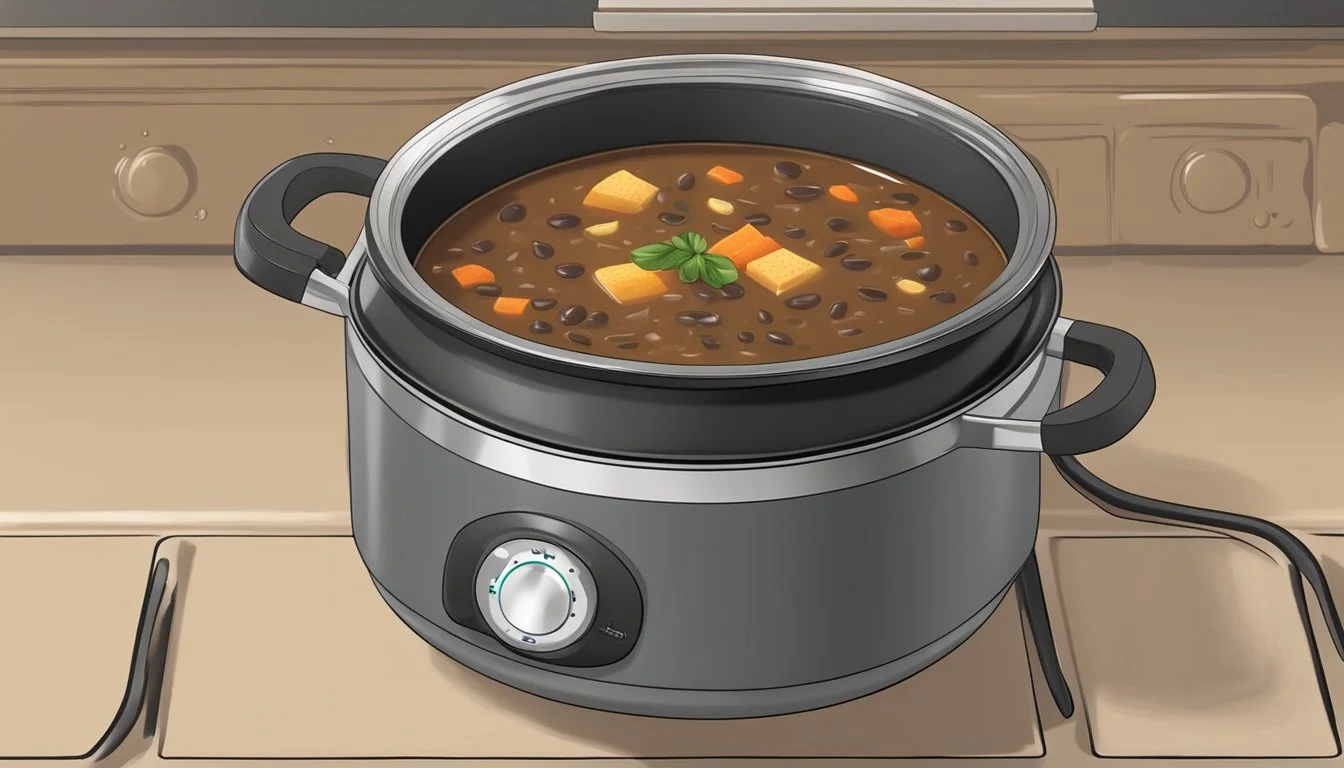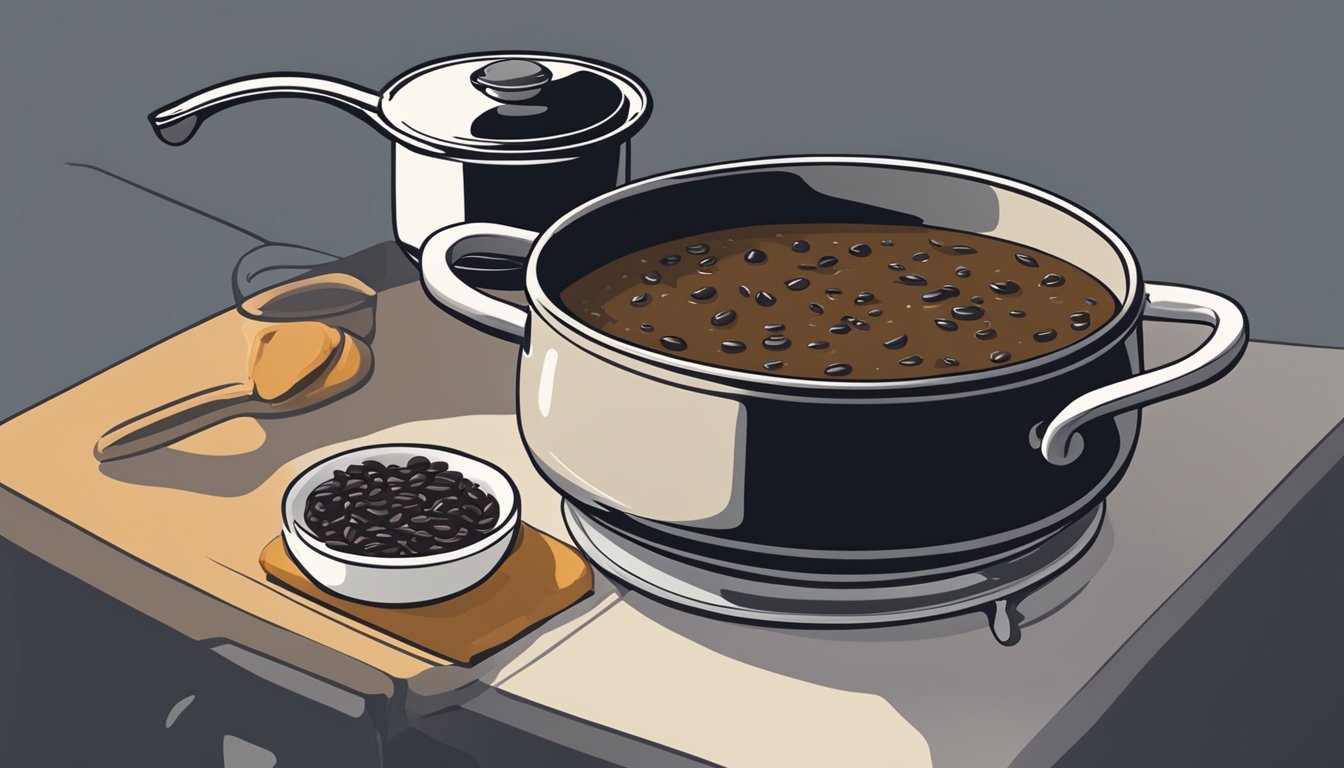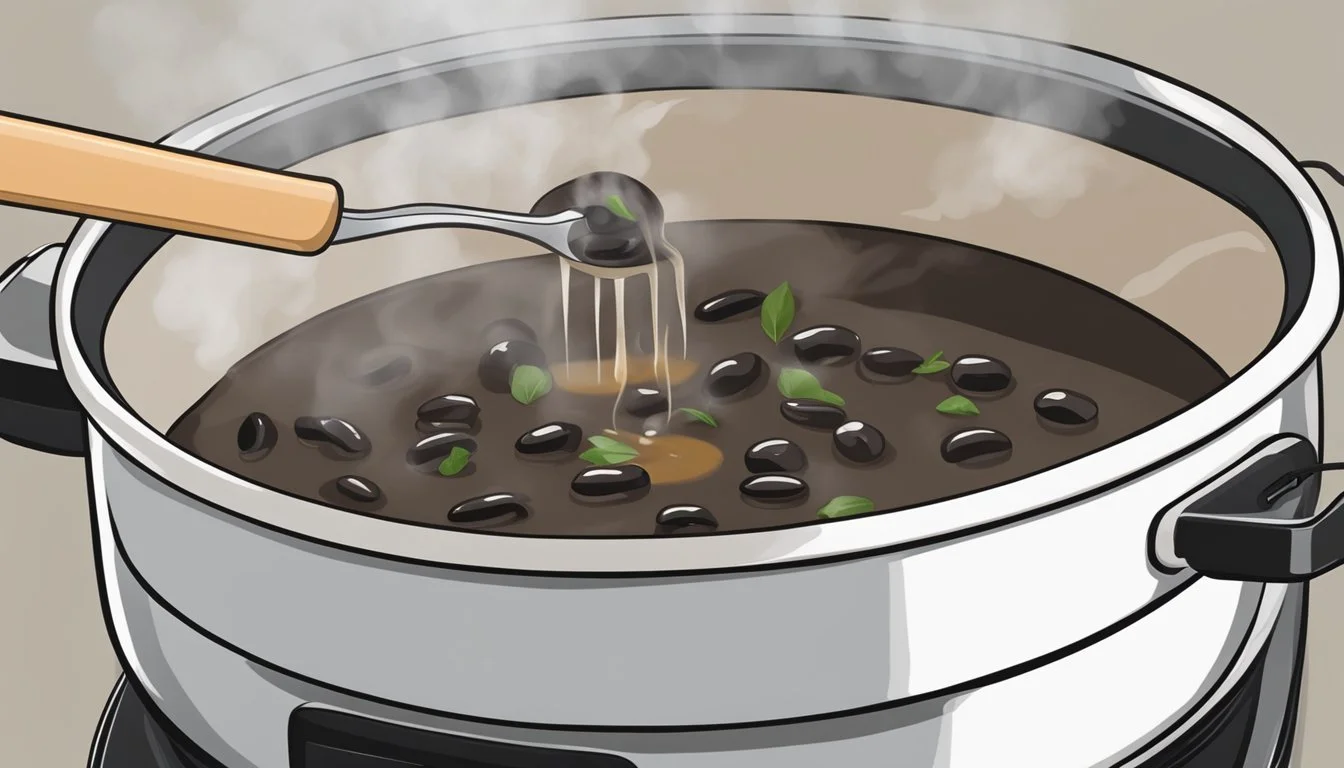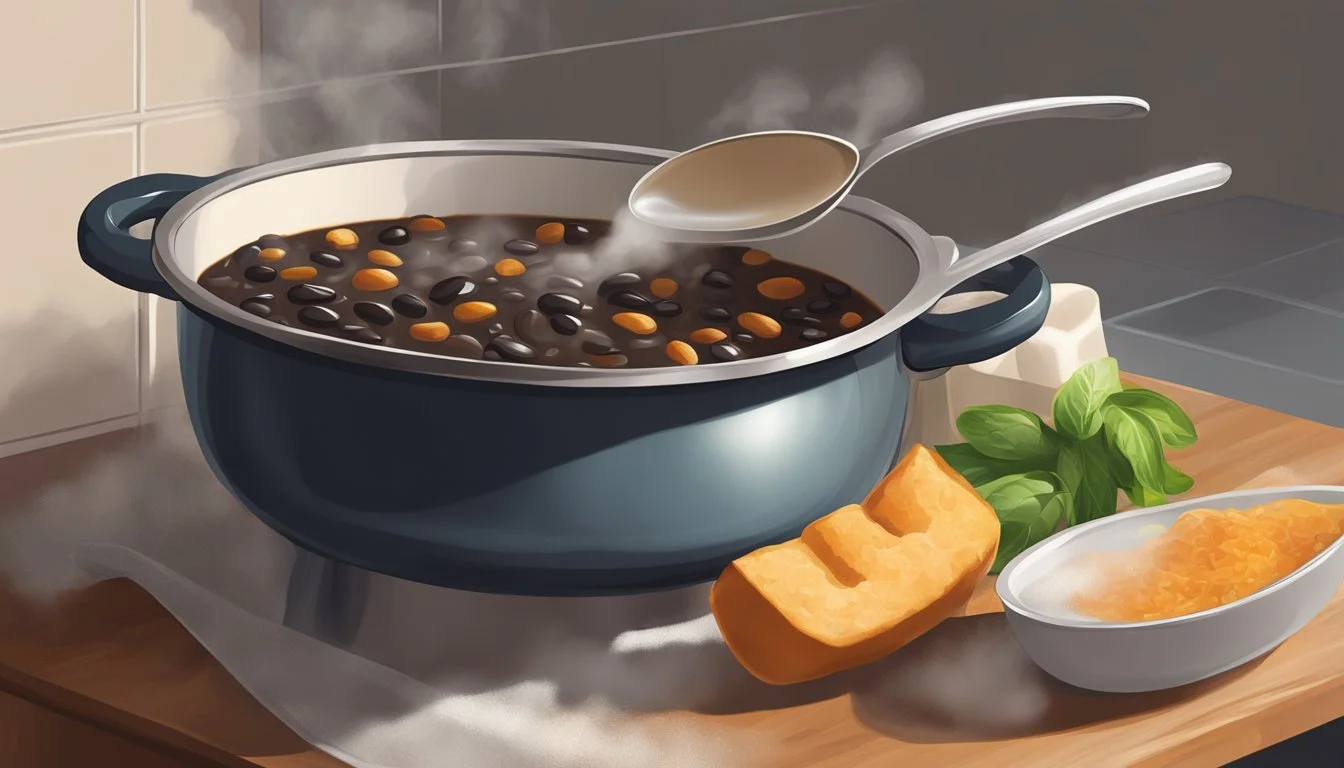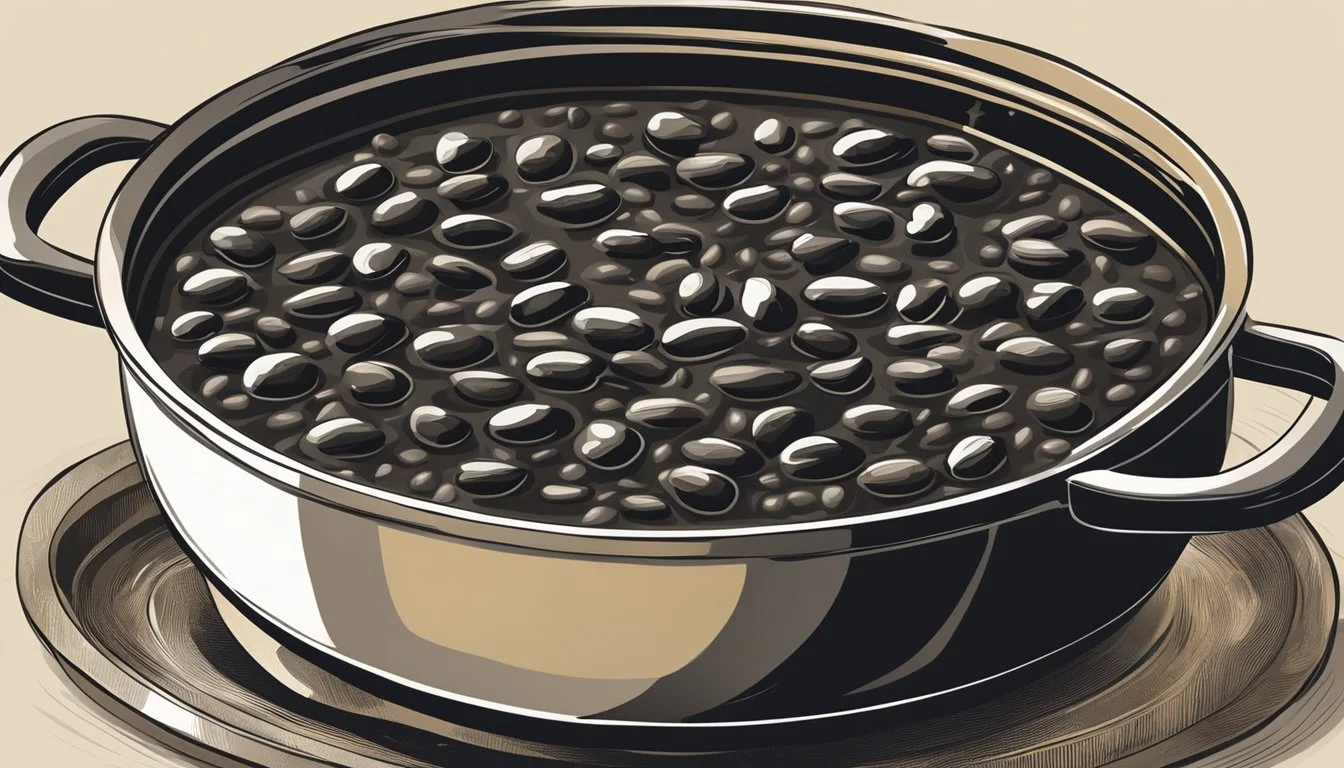Best Way to Reheat Black Bean Soup
Ensuring Creamy Texture Every Time
Black bean soup is a comforting and nourishing dish that often serves as a hearty meal on its own. Rich in flavors and textures, this velvety concoction is a favorite for many, offering a delicious blend of spices, beans, and often a medley of vegetables. The challenge with leftovers, however, lies in reheating the soup without sacrificing its creamy consistency and robust flavor profile. To ensure the soup remains just as enticing as when it was first prepared, certain reheating techniques stand out for their ability to maintain the integrity of this beloved dish.
Reheating black bean soup properly requires gentle heat and a degree of patience to preserve its creaminess. High heat can cause the beans to become mushy and the soup to lose its smooth texture. Care should be taken to warm the soup evenly, stirring occasionally to distribute the heat throughout. Using a stovetop method with a low to medium flame generally yields the best results, allowing the flavors to meld together again while gently bringing the soup back to a desirable temperature.
For those seeking a quicker method, the microwave offers a convenient alternative. Placing the soup in a microwave-safe bowl and covering it loosely allows steam to circulate and the soup to heat evenly. The key is to use medium power settings and to heat the soup in intervals, stirring in between to ensure even warming. This controlled approach helps maintain the creamy quality of the black bean soup without overcooking the ingredients.
Understanding Black Bean Soup
When it comes to warming up with a hearty and nutritious meal, black bean soup stands as a classic choice. By breaking down its core components and types, one gains appreciation for both its culinary diversity and health benefits.
Ingredients Breakdown
The foundation of black bean soup lies in its core ingredients: black beans, onion, garlic, celery, and carrot. These base components are often sautéed in olive oil to unlock their flavors. Spices like cumin, oregano, and a bay leaf are common, creating a rich, aromatic experience. Bell pepper is also regularly included for its sweet and tangy profile.
Nutritional Benefits
Black bean soup is not only tasty but packs a nutritional punch. Black beans offer high levels of fiber and protein, making the soup both filling and nourishing. It's a source of essential minerals such as iron, calcium, and folate, important for overall health.
Different Types of Black Bean Soup
Variations of black bean soup exist across regions. For example, the Cuban black bean soup often features a chunky texture and vibrant spices, while Brazilian versions might be creamier and include meats. The choice between a vegan or vegetarian version hinges on the use of chicken or vegetable broth.
Homemade Vs. Canned
There's a noticeable difference between homemade and canned soups (What wine goes well with soups?). Homemade black bean soup allows for customization of ingredient list, flavors, and textures. In contrast, canned soups offer convenience, though at the potential cost of freshness and the ability to tweak the soup recipes to one's taste.
Preparation Before Reheating
Proper preparation sets the stage for the best reheating results, ensuring the black bean soup retains its creaminess and flavor. This involves correct storage, thawing methods, and preparation steps before the soup meets the heat.
Storing Black Bean Soup
When storing black bean soup, it's essential to cool it rapidly to prevent bacterial growth. Transfer the soup into shallow containers to allow for quick cooling. One should store the soup in the refrigerator if they plan to reheat it within three days. For longer storage, freezing the soup is the better option. Ensure the containers are airtight, and always label them with the freeze date for easy tracking.
Refrigerator Storage: Up to 3 days
Freezer Storage: Up to 3 months
Adding a thin layer of olive oil on top before sealing can create a barrier that protects the soup from freezer burn.
Thawing Frozen Soup
To thaw frozen black bean soup, it is best to transfer it from the freezer to the refrigerator at least 24 hours before reheating. This slow thawing process helps maintain the texture and creaminess of the soup. If in a rush, one can also submerge the sealed container in cold water, ensuring the water is changed every 30 minutes to continue safe thawing.
Refrigerator Thawing: 24 hours
Cold Water Thawing: Change water every 30 minutes
Pre-Reheating Tips
Before reheating, one should stir the black bean soup to redistribute the ingredients and flavors. If the soup appears too thick, they may add a small amount of broth or water to adjust consistency. Reintroduce aromatic spices such as cumin or garlic to refresh the soup's profile. Preparing these elements ensures that the soup retains its signature creaminess and rich taste during the reheating process.
Reheating Techniques
To retain the creamy texture of black bean soup, gentle reheating is essential. Applying consistent, moderate heat helps prevent the proteins and starches from breaking down and separating, which can cause a grainy texture.
Stovetop Simmering
For stovetop reheating, one should pour the soup into a pot and heat it over low to medium heat. Stirring occasionally with a wooden spoon ensures even heating. If the soup is too thick, they can add a small amount of stock to thin it slightly. A drop of olive oil can be added for an extra silky texture.
Using a Microwave
When using a microwave, the soup should be placed in a microwave-safe bowl. It's preferable to heat the soup on medium power in two-minute intervals, stirring between each to distribute the heat evenly. If a creamier texture is desired, one can use an immersion blender after reheating to smooth out any inconsistencies.
Oven Reheating
Oven reheating is a less common method for soup but can be used effectively by preheating the oven to a moderate temperature around 350°F (175°C). They should transfer the soup into an oven-safe dish, cover it with foil to retain moisture, and heat until the soup is warmed through, which may vary depending on quantity.
Slow Cooker Warm-Up
A slow cooker can warm the soup gently and is ideal for serving at gatherings. They should set the slow cooker to the 'warm' setting and allow the soup to gradually come to temperature, stirring occasionally. The gentle heating process helps maintain the soup's creamy consistency.
Finishing Touches
Achieving the perfect balance of creamy consistency and robust flavor in reheated black bean soup requires attention to detail. It's important to restore the creaminess, adjust the consistency to preference, and enhance the flavor, all while choosing the right garnishes and toppings to complement the rich taste of the soup.
Restoring Creaminess
If the black bean soup has lost some of its creaminess upon reheating, one can incorporate a small amount of cream or a dollop of sour cream. An immersion blender or a standard blender can be used to blend part of the soup, which will thicken it and restore the creamy texture.
Cream: Stir in 1-2 tablespoons to enrich the soup.
Sour Cream: A dollop whisked into the soup adds a tangy creaminess.
Adjusting the Consistency
The consistency of black bean soup can vary after reheating. If too thick, slowly add broth, water, or a combination of both, while stirring constantly. If the soup is too thin, allow it to simmer and reduce to the desired thickness.
Thinning: Add broth or water a tablespoon at a time, stir well.
Thickening: Simmer over low heat, stirring occasionally to avoid sticking.
Enhancing the Flavor
Reheating can often mute the soup's flavors. Balance the taste by seasoning with aromatic spices, a pinch of smoked paprika, or a squeeze of lime juice. Drizzling a small amount of olive oil enhances the richness of the soup.
Aromatic Spices: A dash of cumin or coriander can elevate the soup's depth.
Lime Juice: Freshly squeezed juice to taste.
Garnishes and Toppings
The final step to perfect reheated black bean soup is in selecting the garnishes and toppings. Choose from chopped cilantro, avocado slices, a sprinkle of shredded cheese, tortilla chips, or pico de gallo to add layers of texture and flavor.
Cilantro: Freshly chopped cilantro adds a herbal note.
Cheese: Shredded cheese melts into a gooey texture that pairs well with the creamy soup.
Crunch: Tortilla chips offer a pleasing contrast to the soup's smoothness.
Accompaniments
Choosing the right accompaniments can transform the simple pleasure of a reheated bowl of black bean soup into a more complex and satisfying dining experience. Carefully selected side dishes, pairings, and beverages can elevate the soup and cater to a variety of taste preferences.
Suitable Side Dishes
Rice: A bed of fluffy rice, especially when seasoned with cilantro and lime juice, complements the creaminess of black bean soup.
Salad: For a lighter addition, a crisp salad with arugula, sweet corn, and a tangy vinaigrette offers a refreshing counterpoint.
Cornbread: Southern-style cornbread, with its hint of sweetness, pairs beautifully with the savory depth of the soup.
Perfect Pairings for a Fulfilling Meal
Tortilla strips or chips: Crispy tortilla strips or chips add a delightful crunch and are ideal for dipping.
Quinoa: As a nutritious alternative to rice, quinoa can bulk up the meal without overpowering the soup's flavors.
Shredded cheese: A sprinkle of shredded cheese, such as cheddar or Monterey Jack, melts into the soup for an extra layer of richness.
Sour cream: A dollop of sour cream on top not only looks appealing but also provides a cool, creamy texture that balances the soup's hearty quality.
Beverages to Complement the Soup
To complete the meal, consider the following beverages:
For non-alcoholic options: A glass of cool lime-infused water or iced tea can cleanse the palate between mouthfuls of the rich soup.
For wine enthusiasts: A light-bodied white wine, like a Sauvignon Blanc, has the acidity to cut through the soup’s creaminess without overwhelming the dish.
Special Considerations
When reheating black bean soup, it's important to consider the dietary needs and preferences of those who will be enjoying it. Adapting the reheating method to maintain the soup's creaminess without compromising the integrity of any dietary restrictions is critical.
Vegan and Gluten-Free Adaptations
For Vegan Soup: Ensure that no dairy products are used when reheating. Opt for plant-based alternatives like almond or coconut milk to restore creaminess if needed.
Gluten-Free Needs: Thickeners often contain gluten. To keep the soup gluten-free, use alternatives such as cornstarch or a slurry of gluten-free flour blends.
Allergy-Friendly Options
Nut Allergies: Avoid plant-based milks from nuts, and instead choose soy or oat milk for adding creaminess.
Soy Allergies: Steer clear of tofu or soy-based products. For added protein without allergens, incorporate gluten-free and soy-free meat substitutes or additional beans.
Adjusting for Dietary Restrictions
Low-Sodium: Do not add extra salt during reheating. Consider using low-sodium broth if more liquid is needed.
Calorie-Conscious: Be mindful of the ingredients added to enhance creaminess. Use low-fat options or simply puree part of the soup to thicken it without additional calories.
Troubleshooting Common Issues
When reheating black bean soup, maintaining its creaminess and balance of flavors can be a delicate process. This section addresses how to resolve issues related to the consistency, flavor, and texture of the soup.
Soup Too Thin or Thick
If the black bean soup is too thin, one can gradually add a mixture of cornstarch and water to achieve the desired thickness. Conversely, if the soup is too thick, slowly stirring in additional stock or broth can help. It's important to adjust in small increments:
For thickening: Mix 1 tablespoon of cornstarch with 2 tablespoons of water.
For thinning: Add 1/4 cup of broth at a time until the preferred consistency is reached.
Flavor Imbalances
A soup's flavor should be a harmonious blend of spices, seasonings, and the main ingredients. If the flavor is off:
Under-seasoned: Enhance flavors with a pinch of salt, additional spices, or a squeeze of lime juice for brightness.
Over-seasoned: Dilute with more broth and add mild ingredients like canned black beans or vegetables.
Texture Problems
Proper texture in black bean soup contributes to its overall appeal:
Creamy soup turned grainy: Reheat slowly on the stovetop while stirring to avoid separation.
Chunky soup losing its textural components: Ensure that the soup isn't overcooked, which could cause the beans and vegetables to become too soft. Gentle reheating preserves texture.
Avoid high heat, as it can quickly alter the desired creaminess and cause beans to become mushy.
Innovative Leftover Ideas
When it comes to reinventing leftover black bean soup, the key is to utilize its rich, creamy base to enhance new dishes, ensuring that no flavor goes to waste.
Black Bean Soup as a Base
Utilizing leftover black bean soup as a foundation for new recipes can transform the meal experience. One can create a hearty stew by incorporating cubes of sweet potato or zucchini, which contribute not only additional nutrients but also interesting texture. Alternatively, stirring in cooked rice or quinoa can turn the soup into a more substantial grain bowl. To retain the creaminess while adding depth, consider blending the black bean soup until smooth and using it as a sauce over a bed of lightly sautéed kale.
Stew Enhancement: Add sweet potatoes or zucchini.
Grain Bowl: Mix with rice or quinoa.
Creamy Sauce: Blend and serve over kale.
Introducing New Ingredients
Refreshing leftover black bean soup can be as simple as integrating fresh components. Bell peppers can be chopped and sautéed until tender before being mixed into the soup; their sweetness will counterbalance the earthiness of the black beans. Additionally, kale can be wilted in the soup, providing a nutrient-dense and vibrant green addition. To spice things up and tailor the flavor profile, one might consider a sprinkle of cumin or a dash of lime juice, ensuring that the leftovers feel like an entirely new dish.
Veggies: Add sautéed bell peppers.
Greens: Wilt kale into the soup.
Customize Flavor: Sprinkle cumin or lime juice.
Advanced Tips from the Pros
Expert chefs have refined methods to maximize the taste and texture of black bean soup. These advanced tips can elevate the standard recipe into a nourishing, hearty dish that delights the palate.
Enhancing Depth of Flavor
To deepen the flavor in black bean soup, one can introduce smoky elements such as bacon or ham during the cooking process. Aromatic spices like cumin and chili powder should be toasted briefly before being incorporated into the soup to unlock their full spectrum of flavors. For a truly robust taste, consider simmering the soup with fresh herbs like thyme, which complements black beans exceptionally well.
Culinary Techniques to Master
Perfecting soup recipes requires mastery of certain techniques. Simmering, not boiling, is key to maintaining the soup’s creaminess while allowing flavors to meld. For a silky texture, chefs often blend part of the soup and then reintroduce it, achieving a balanced consistency. Familiarizing oneself with various kitchen gadgets can also be beneficial—a slow cooker can tenderize ingredients over several hours, while an Instant Pot can drastically shorten cooking times without sacrificing depth of flavor.
Soup Making Secrets
Those new to making black bean soup might not know the impact of layering ingredients. Aromatic vegetables should be sautéed first to create a flavor base. Adding a spoonful of an acid, such as lime juice, can brighten the soup's profile. Additionally, don't shy away from using a high-quality stock or broth—the backbone of any good soup. If heat is desired, a finely diced jalapeño can be sautéed with the initial vegetables for a subtle yet discernible kick.
Presentation Tricks
Presentation greatly enhances the eating experience. Top each serving of black bean soup with a dollop of sour cream, which offers a cool, tangy counterpoint to the soup’s warmth. Garnish with cilantro and crispy tortilla strips for added color and texture. The contrast of smooth soup with these garnishments provides not only varied flavors but also a visually appealing dish.

